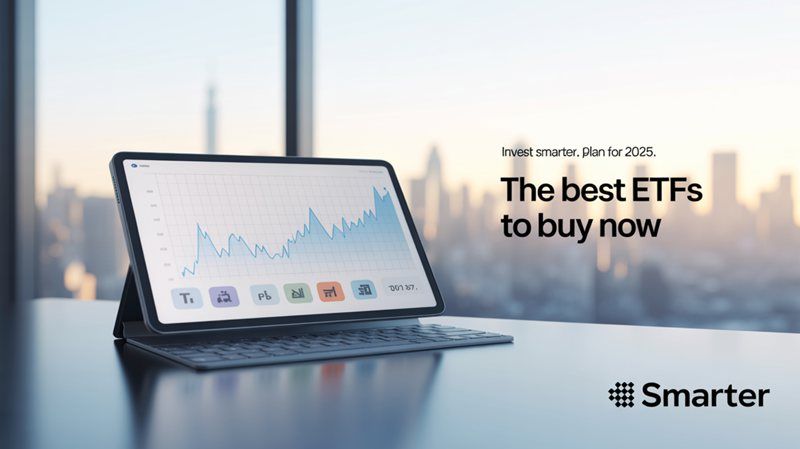MarketLens
Gold ETF Inflows Surge for Fourth Month: Analyzing August 2024 Trends
In August 2024, global gold exchange-traded funds (ETFs) experienced their fourth consecutive month of net inflows, reflecting a robust demand for gold as a safe-haven asset amidst economic uncertainties and geopolitical tensions. This report delves into the detailed performance of gold ETFs in August 2024, analyzing regional inflows, market conditions, and the factors driving investor behavior. The report also examines the broader implications of these trends on the gold market and provides a comprehensive overview of the current state of gold ETFs.
Introduction
Regional Performance
North America
In August 2024, North American gold ETFs led the global inflows, adding approximately $1.4 billion, equivalent to 17.2 tonnes of gold. This significant inflow was primarily driven by easing inflation and a cooling labor market in the United States, which led to declines in US Treasury yields and the dollar. The reduction in yields made gold more attractive as an investment, while the weaker dollar increased the purchasing power of foreign investors.
The COMEX net longs also saw a notable increase, reaching 917 tonnes, the highest level since February 2020. This surge in long positions indicates a bullish sentiment towards gold, driven by expectations of interest rate cuts by the Federal Reserve. The overall assets under management (AUM) in North American gold ETFs reached new heights, reflecting a strong investor appetite for gold amidst economic uncertainties.
Europe
European gold ETFs attracted $362 million in August 2024, adding 7.9 tonnes to their holdings. Switzerland and the UK were the primary contributors to these inflows, despite a slower pace compared to previous months. The inflows were influenced by geopolitical tensions and economic uncertainties in the region, which heightened the demand for safe-haven assets like gold.
The London Bullion Market Association (LBMA) gold price reached new heights, peaking at $2,529.75/oz on August 20, 2024. This surge in gold prices further bolstered investor confidence in gold ETFs. Additionally, significant inflows related to FX hedging were noted in Switzerland, indicating that investors were seeking to protect their portfolios against currency fluctuations.
Asia
Asian gold ETFs continued their inflow streak, adding $32 million in August 2024, marking the 18th consecutive month of positive inflows in the region. India and Japan were the primary drivers of these inflows, with India achieving its strongest month since April 2019 due to favorable local gold prices and positive budget impacts. Japan also saw significant inflows for the sixth consecutive month, influenced by equity market volatility and lower bond yields.
However, China experienced outflows, breaking an eight-month inflow streak. The outflows were attributed to a decline in consumer capacity and willingness to purchase gold, particularly for jewelry. Despite this, the overall performance of Asian gold ETFs remained positive, reflecting strong regional demand for gold.
Market Conditions and Influencing Factors
Economic Uncertainty and Geopolitical Tensions
The global economic landscape in 2024 has been characterized by significant uncertainties, including fluctuating interest rates, geopolitical tensions, and varying inflation rates. These factors have collectively driven the demand for gold as a safe-haven asset. In August 2024, the ongoing volatility in markets and concerns about interest rates, particularly in relation to the Federal Reserve’s policies, contributed to increased demand for gold ETFs.
Geopolitical tensions, such as the attempted assassination of presidential candidate Donald Trump and President Joe Biden’s withdrawal from the race, further heightened investor anxiety, leading to a surge in gold investments. The combination of declining Treasury yields, prospects of interest rate cuts, and geopolitical risks created a supportive environment for gold, influencing investor behavior and ETF flows.
Gold Price Performance
In August 2024, the gold price rose by 2.3%, ending the month at a new record high of $2,503/oz. This increase in gold prices was supported by a weakening US Dollar and declining Treasury yields. The market’s increased certainty around a potential Federal Reserve interest rate cut also played a significant role in driving gold prices higher.
The overall appreciation of gold in 2024, with a year-to-date increase of 21.3%, made it one of the best-performing assets of the year. This strong performance further bolstered investor confidence in gold ETFs, leading to sustained inflows.
Trading Volumes and Market Activity
Gold trading volumes in August 2024 reached $241 billion per day, a 3.2% decrease month-on-month. However, over-the-counter (OTC) volumes increased by 5.9% to $158 billion per day. The decline in trading volumes was primarily observed in North America, where volumes dropped by 28%, while the Shanghai Futures Exchange saw an 11% rise in gold trade volume.
The fluctuations in trading volumes reflect the varying levels of investor activity and sentiment across different regions. Despite the overall decrease in trading volumes, the sustained inflows into gold ETFs indicate a strong underlying demand for gold as an investment.
Broader Implications and Future Outlook
Investor Sentiment and Safe-Haven Demand
The sustained inflows into gold ETFs in August 2024 highlight the strong investor sentiment towards gold as a safe-haven asset. The ongoing economic uncertainties, geopolitical tensions, and expectations of interest rate cuts have collectively driven the demand for gold. As investors seek to hedge against market risks and protect their portfolios, gold ETFs have emerged as a preferred investment vehicle.
The positive performance of gold ETFs also reflects broader market trends, with investors showing a preference for value and fixed-income funds amidst economic concerns. The potential for renewed market volatility, driven by economic data releases and central bank meetings, could further sustain interest in gold ETFs in the coming months.
Regional Dynamics and Market Trends
The regional dynamics observed in August 2024 provide valuable insights into the varying levels of demand for gold across different markets. North America and Europe have emerged as significant contributors to the global inflows, driven by economic uncertainties and geopolitical risks. In contrast, Asia has shown a mixed performance, with strong demand from India and Japan offset by outflows from China.
The reduction of import duties in India and favorable local gold prices have spurred strong buying interest from jewelry retailers and consumers, highlighting the importance of regional market conditions in influencing gold demand. The contrasting performance of China, with outflows breaking an eight-month inflow streak, underscores the impact of consumer capacity and willingness to purchase gold on ETF flows.
Future Outlook and Potential Risks
Looking ahead, the future outlook for gold ETFs remains positive, with several factors likely to influence investor behavior. The anticipated interest rate cuts by the Federal Reserve and other central banks could further support gold prices and drive continued inflows into gold ETFs. Additionally, ongoing geopolitical tensions and economic uncertainties are expected to sustain the demand for gold as a safe-haven asset.
However, potential risks remain, including fluctuations in gold prices, changes in market conditions, and shifts in investor sentiment. The performance of gold ETFs will be closely tied to broader economic trends and geopolitical developments, making it essential for investors to stay informed and adapt their strategies accordingly.
Conclusion
In August 2024, global gold ETFs experienced their fourth consecutive month of net inflows, reflecting a robust demand for gold amidst economic uncertainties and geopolitical tensions. North America and Europe emerged as significant contributors to the global inflows, driven by easing inflation, declining Treasury yields, and geopolitical risks. Asia showed a mixed performance, with strong demand from India and Japan offset by outflows from China.
The sustained inflows into gold ETFs highlight the strong investor sentiment towards gold as a safe-haven asset. The ongoing economic uncertainties, geopolitical tensions, and expectations of interest rate cuts have collectively driven the demand for gold, making it one of the best-performing assets of the year.
Looking ahead, the future outlook for gold ETFs remains positive, with several factors likely to influence investor behavior. The anticipated interest rate cuts by the Federal Reserve and other central banks, ongoing geopolitical tensions, and economic uncertainties are expected to sustain the demand for gold as a safe-haven asset. However, potential risks remain, making it essential for investors to stay informed and adapt their strategies accordingly.
In summary, August 2024 marked a strong performance for gold ETFs, reflecting a robust recovery and growth trajectory. The detailed analysis of regional performance, market conditions, and influencing factors provides valuable insights into the current state of gold ETFs and their future outlook.
Related Articles
Category
You may also like
No related articles available
Breaking News
View All →No topics available at the moment






